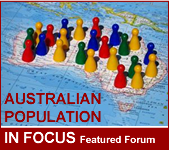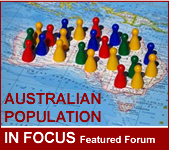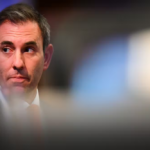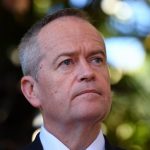Invest in health now for a better future

Dr Mukesh Haikerwal, a General Medical Practitioner and Chair of Council of the World Medical Association, delivered the following address at Global Access Partners’ National Economic Review 2011: Australia’s Annual Growth Summit on Friday 16 September 2011.
Health is very important to all Australians. The wellbeing of the nation extends beyond good health, ill health, clinical care, and beyond illness prevention to core parameters such as productivity, economic growth, confidence and the state of our own society. There are many social determinants of health that affect this, like nutrition.
Investing in the health and wellbeing of our society is a sound investment. It’s not only the mark of a caring, fair and equitable society, but a fair investment into our future. A willingness to invest and to push boundaries in all fields of endeavor brings with it dividends of energy, drive and willingness to innovate. In the United States it’s a very different situation. People are scared to lose their jobs. They don’t move from one employer to another because of fear of lack of access. 50 million American people don’t have access to healthcare insurance. That’s dropping with the recent legislative changes, but those changes have yet to be put into practice.
 The Australian healthcare system is excellent and stacks up well internationally. There is hope for addressing many inequities in our healthcare system, particularly for Aboriginal and Torres Strait Islander people, and those living regionally, rurally and remotely. Interestingly, when I was president of the Australian Medical Association (AMA), one of the first papers that we did on Aboriginal health was quite a risk — we talked about the incarceration of the Aboriginal people in prisons. In terms of representation in our goals, that is the biggest population proportion in Australia.
The Australian healthcare system is excellent and stacks up well internationally. There is hope for addressing many inequities in our healthcare system, particularly for Aboriginal and Torres Strait Islander people, and those living regionally, rurally and remotely. Interestingly, when I was president of the Australian Medical Association (AMA), one of the first papers that we did on Aboriginal health was quite a risk — we talked about the incarceration of the Aboriginal people in prisons. In terms of representation in our goals, that is the biggest population proportion in Australia.
So the trajectory, is that the cost of healthcare is going upwards and will not work in the future. The fiscal strain of our economy will result in a worse system to care for us in our dotage and for our children to benefit from. Like most places in the world, Australia’s healthcare system has to evolve to accommodate new learning and changing patterns of illness. Therefore, the key for us to have a sustainable system in the future is to do things in a different way. The system demands that. The population demands that.
I think old age is a good thing. I think it embodies the success of our healthcare system and says “we’ve done things well”. The challenge for people getting to older age now is to get in a fitter, healthier state so they don’t strain their own wellness.
We need to invest in health now for a better future. We need to invest in research. We are, as a nation, punching well above our weight in healthcare research. If we maintain that cutting edge, we maintain our place internationally. I was very lucky to go to Washington DC in February this year, as an initiative of the Prime Minister and the Secretary of the State of the US, Hilary Clinton, to discuss innovation, technology and e-health with the US government. But why would the States choose Australia? Because we do it so well. We can perform.
The reform process involves four processes. Number one — healthcare needs to be about patient care. If patients have more information and knowledge about their healthcare, they can make better, informed decisions and get the right people to help them with that care.
Number two — healthcare between healthcare providers is pretty messed up. We don’t communicate particularly well. So if you go from one area to another in the healthcare sector, the information generally doesn’t follow. Thus, the healthcare is disjointed. So joining up the dots between healthcare providers to allow information to transfer from one sector of care to another is a core benefit we could provide today and tomorrow, which will improve healthcare dramatically.
The third pillar is about equity. I mentioned very briefly about areas where people are lacking care. Apart from Aboriginal and Torres Strait Islander people and people living in regional and rural Australia, we’re looking at people living with a mental illness or disability who experience care unequally.
The fourth one is the parameters that come with the emerging system of the future. We know that if you go from one part of the system to another you’re going to get the same level of quality of care because the service expectation is there.
The whole issue of a system that actually works for the future is about enabling and empowering the people that work the system to make sure they work well. One of the chief things is the $466.7 million over two years to be delivered on 1 July 2012, which will allow more Australians to have the ability to access their own electronic health record.
This brings into the place the many benefits of joining up the care, about better examples of healthcare management, and improved ways of entrance forming that care transition from one area to the other. Those that work in health know that there are boundary areas where care is transferred when mistakes happen. If you can shorten that up and make it a good information transfer from one sector to another, it means you will get better healthcare across the board. This also ensures we get parameters in play, as well as better ways of managing things like epidemics and looking at emerging trends in healthcare.
If we get NBN, we can do things a lot better, a lot faster, a lot more equitably. The bigger conference piece, which was started on 1 July this year by the government, means that today if someone in rural Australia goes to see their GP they can beam in by video conference to a specialist anywhere in Australia. There is a fee and a rebate for both, which is a much more equitable way of doing business that will bring access to the country.
We, in Australia, are playing significant roles across the world. There is a conference in New York this month on continuity of management which is really important. This is a key part of infrastructure, of population building and health infrastructure that we need to be part of. We have to operationalise or learn from past difficulties and make sure we address them and address them well, for the better health of our patients and of our population in the future. It’s not just that we’ll get better, but we’ll actually reform more productively.
Dr Mukesh Haikerwal is a General Medical Practitioner in Melbourne’s Western Suburbs where he has practised since 1991. He is currently working with the National e-Health Transition Authority as its National Clinical Lead and Head of the Clinical Leadership & Engagement Unit. Between February 2008 and June 2009, he was appointed as a Commissioner to the National Health and Hospitals Reform Commission by the Prime Minister and Minister for Health. He was the 19th Federal President of the Australian Medical Association (AMA), its Federal Vice President and, prior to that AMA Victorian State President. He was the founding Chair of the Westgate Division of Family Medicine now the Westgate GP Network covering the Federal seats of Gellibrand and Lalor. In April 2011, he was appointed Chair of Council of the World Medical Association. Dr Haikerwal is a Professor in the School of Medicine in the Faculty of Health Sciences at Flinders University in Adelaide, South Australia. In January 2011 Dr Haikerwal was made an Officer of the Order of Australia.














satooh
February 28, 2012 at 10:22 pm
Health is wealth!
People from all over the globe gives important to health in various degrees but still I will agree with you that it is a vital determinant to lots of things. We must take step to make the health care deliver system accessible and affordable that who ever need it can use it. Lots of the country’s budget goes to health care and if we will be very much effective in both preventive and promotive measures then we don’t have to worry of paying much for the curative and rehabilitative health care.